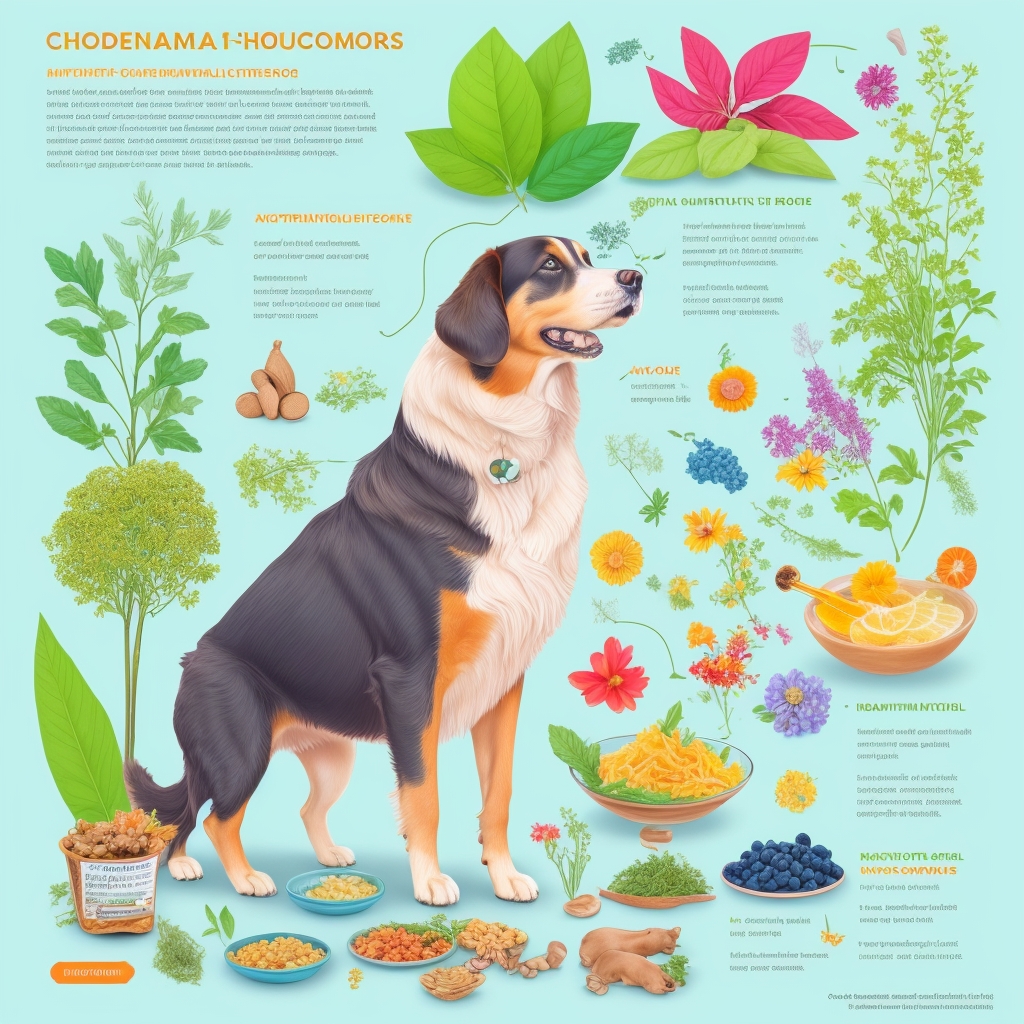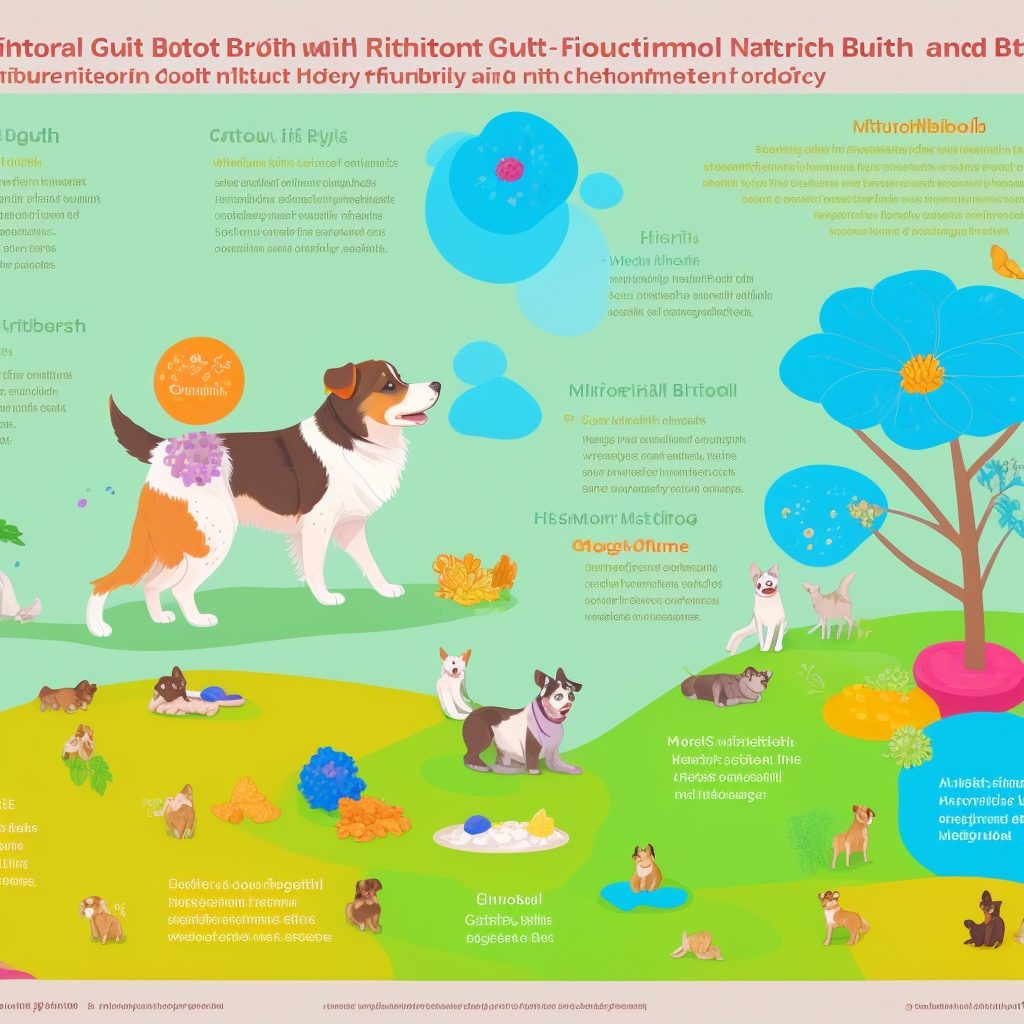I remember it like it was yesterday. I got a frantic call from my friend, Sarah. Her voice was shaky, and I could almost feel the stress radiating through the phone. “Bella’s itching again,” she said, exasperated. Bella, her adorable golden retriever, had been dealing with allergies for months, and nothing seemed to work. The antihistamines were barely making a dent, and poor Bella was scratching herself raw. The constant scratching had created hot spots on her flanks, and her once-lustrous coat was becoming patchy and dull.
What’s interesting is, Sarah’s story isn’t unique. Veterinarians across North America are reporting a significant rise in allergy-related claims, with some insurance data showing a 42% increase in the frequency of allergy and ear infection claims between 2019 and 2023. This growing prevalence of canine allergies is a frustrating reality for many pet parents, with environmental factors like increased pollution, climate change affecting pollen seasons, and even the rise of ultra-processed commercial pet foods potentially contributing to this alarming trend. Sarah had tried everything conventional—from prescription shampoos to steroid treatments—and she was at her wit’s end. That’s when she turned to me for advice. I’d been diving deep into the world of natural remedies and was especially intrigued by how diet could play a pivotal role in managing inflammation, which, as recent studies increasingly confirm, is often at the root of chronic conditions like allergies in dogs. The emerging research on the gut-skin axis in canines particularly fascinated me, showing how intestinal health directly impacts skin conditions. I suggested we explore an anti-inflammatory diet as a first step—something I’d read about but hadn’t yet put into practice with a real case.
“Do you really think it’ll help?” she asked, her voice tinged with a mix of hope and deep skepticism. “I honestly don’t know for sure, but it’s absolutely worth a shot,” I replied, fully aware of how much was riding on this experiment. The rising interest in “clean label” and functional pet foods, rich in ingredients that actively combat inflammation, made me genuinely optimistic. The pet food industry has seen a remarkable shift toward transparency and ingredient quality, with many manufacturers now incorporating superfoods and adaptogens specifically designed to support immune function and reduce inflammatory responses.
We set a date to start the transition, and as the days ticked by, I couldn’t shake the butterflies in my stomach. Was I really ready to take on this responsibility? I found myself reading every article I could find, like the 2025 Guide: Natural Diets for Dogs with Allergies, hoping to arm myself with the latest insights and recommendations. I also consulted with Dr. Jennifer Martinez, a holistic veterinarian who had been pioneering integrative approaches to canine allergies for over fifteen years. Her guidance on the importance of supporting liver detoxification pathways while introducing anti-inflammatory foods proved invaluable.
Finally, the day arrived. We began by slowly introducing Bella to a diet rich in omega-3 fatty acids and antioxidants. Think high-quality wild-caught salmon, vibrant sweet potatoes, and those little powerhouses, blueberries—they became staples in her meals. We also incorporated turmeric with a pinch of black pepper to enhance bioavailability, and bone broth made from grass-fed beef bones to support gut healing. The idea was simple but powerful: combat inflammation from the inside out, allowing her skin to heal naturally. This approach is strongly supported by canine nutritionists, who highlight how diets rich in these compounds can significantly reduce pro-inflammatory markers like C-reactive protein and interleukin-6 in a dog’s system. Recent studies from veterinary colleges have shown that dogs fed anti-inflammatory diets for eight weeks showed measurable improvements in skin barrier function and reduced histamine responses.
The first week was nerve-wracking. Bella seemed a bit unsure of her new meals, sniffing cautiously at the unfamiliar combinations, and Sarah was worried about whether she’d get all the nutrients she needed. “What if it’s not enough?” she fretted, watching Bella pick at her food with less enthusiasm than usual. I reassured her with what I knew, a conviction solidified by my research: while this was a new path, it was rooted in sound, evolving principles of canine nutrition. Inflammatory responses can often be profoundly moderated through dietary adjustments, a concept supported by numerous contemporary studies and leading experts in the field. We carefully tracked Bella’s caloric intake and supplemented with a high-quality multivitamin specifically formulated for dogs transitioning to fresh food diets.
By the second week, I started noticing small, but incredibly encouraging, changes. Bella’s coat appeared shinier, with new growth showing a healthier texture, and she didn’t seem as desperate to scratch herself. Her energy levels also seemed to improve—she was more playful during walks and showed renewed interest in her favorite toys. Sarah was cautiously optimistic, which, frankly, was a huge step for her, but I was still holding my breath. I couldn’t shake the fear that maybe this was just a fluke, a momentary reprieve. However, the subtle changes in Bella’s behavior patterns—sleeping more soundly through the night and showing less anxiety during thunderstorms—suggested that the inflammation reduction was having systemic benefits beyond just her skin condition.
Then came the messy middle of our journey, as it often does with real-world applications. Around the third week, Bella had a minor setback. Her itching flared up after a particularly humid day, and I was crushed, thinking we might have missed something crucial. I poured over the details of her diet, wondering if we needed to tweak the balance or eliminate a particular ingredient. Here’s the thing though, canine allergies are rarely triggered by a single factor; it’s often a complex combination involving environmental triggers, seasonal changes, stress levels, and dietary sensitivities, making it challenging to pinpoint the exact cause. The interconnected nature of the immune system means that healing rarely follows a straight line, and temporary setbacks are often part of the recovery process.
It was during this time that I stumbled upon the Avoid Dog Allergy Mistakes Naturally in 2025 article. It highlighted common pitfalls in transitioning dogs to natural diets, and I realized we might have introduced a new protein too quickly. A common expert insight is that patience is paramount, and sometimes, less is more during initial dietary changes. The article specifically mentioned that rotating proteins too frequently during the initial healing phase can overwhelm an already compromised immune system. I called Sarah immediately, and we decided to dial back and simplify Bella’s meals again, focusing on consistency with the core anti-inflammatory components. We returned to a single protein source—the salmon—and maintained the same vegetable combinations for at least two more weeks to allow her system to stabilize.
Over the next few weeks, Bella’s condition improved steadily and dramatically. Her scratching reduced significantly, from constant throughout the day to occasional mild episodes, and there was a light in her eyes that hadn’t been there for months. The hot spots began healing, new fur growth appeared healthy and thick, and her overall demeanor transformed from anxious and uncomfortable to relaxed and playful. For Sarah, it was like watching her dog come back to life. She was thrilled, and I was so relieved, feeling like we were finally on the right track. The transformation was so remarkable that Sarah’s veterinarian asked for detailed notes about the dietary protocol to share with other clients facing similar challenges.
In hindsight, this journey taught me so much more than just the mechanics of an anti-inflammatory diet. It was a profound lesson in patience, in the importance of truly listening to our pets and reading their subtle cues, and in the sheer value of being open to trying something new, even when it feels a little scary. It truly underscored my belief that an authentically holistic approach to pet health—one that considers the whole animal rather than just treating symptoms—is often the most effective. The experience also highlighted how crucial it is to maintain detailed records during dietary transitions, tracking not just physical symptoms but also behavioral changes, sleep patterns, and overall quality of life indicators.
Frequently Asked Questions About Anti-Inflammatory Diets for Dogs
How long does it take to see results with an anti-inflammatory diet for dogs?
Results can vary quite a bit depending on the severity of the condition and individual dog factors, but typically, initial improvements are often seen within 2-4 weeks, with more significant changes becoming apparent after 6-8 weeks of consistent dietary management. It’s crucial to monitor your dog’s specific response and be prepared to adjust the diet as needed. As Bella’s case beautifully illustrates, consistency is absolutely key, and minor setbacks can happen, requiring a patient approach. Some dogs with severe inflammatory conditions may need 12-16 weeks to show substantial improvement, particularly if they’re dealing with leaky gut syndrome or multiple food sensitivities that need time to resolve.
What foods should be included in an anti-inflammatory diet for dogs?
Focus on foods rich in omega-3 fatty acids, like wild-caught salmon, sardines, or mackerel, along with fruits and vegetables high in antioxidants such as blueberries, sweet potatoes, spinach, and leafy greens. These ingredients are powerhouse inflammation fighters and support overall canine health. Many current pet nutrition trends for 2024-2025 are leaning into these “functional foods” for their added health benefits. Consider incorporating coconut oil for its medium-chain triglycerides, bone broth for gut healing properties, and herbs like turmeric and ginger for their potent anti-inflammatory compounds. Fermented vegetables can also provide beneficial probiotics to support digestive health, which is intimately connected to immune function and skin health.
Can all dogs benefit from an anti-inflammatory diet?
While a vast majority of dogs can certainly benefit from a diet focused on reducing inflammation, it’s paramount to tailor the diet to your dog’s specific health needs, age, activity level, and any existing medical conditions. Always, and I mean always, consult with a trusted veterinarian or a certified veterinary nutritionist, especially if your dog has existing health conditions or is on medication. They can help ensure the diet is nutritionally complete and safe. Senior dogs, puppies, pregnant or nursing females, and dogs with kidney or liver disease may require special modifications to ensure the anti-inflammatory approach doesn’t interfere with their specific nutritional requirements or medical treatments.
What should be avoided in a dog’s diet to prevent allergies?
Common dietary allergens often include certain proteins (like beef or chicken for some dogs) and grains such as wheat and corn, though individual sensitivities vary greatly. However, it’s a common misconception that all grains are bad; some grain-free diets have even been linked to cardiac issues in dogs, particularly dilated cardiomyopathy. It’s best to work with a vet to identify specific triggers for your dog, and consider advanced allergy testing if needed for a targeted approach. Additionally, artificial preservatives, colors, and flavors should be avoided, as well as high-omega-6 oils like corn and soybean oil, which can promote inflammation. Ultra-processed foods with long ingredient lists and chemical additives can also trigger inflammatory responses in sensitive dogs.
Are there any risks in switching to a natural diet for dogs?
Transitioning too quickly or without proper professional guidance can unfortunately lead to nutritional imbalances, digestive upset, or even deficiency diseases if the diet isn’t properly formulated. This is why a gradual introduction, as we did with Bella, and consistent veterinary consultation are so vital to ensure the diet meets all of your dog’s nutritional requirements and avoids any unforeseen deficiencies or adverse reactions. Particular attention must be paid to calcium-phosphorus ratios, essential amino acid profiles, and vitamin levels, especially B vitamins and fat-soluble vitamins A, D, E, and K. Working with a veterinary nutritionist to formulate a complete and balanced anti-inflammatory diet is often the safest approach for long-term feeding.
How do I know if the anti-inflammatory diet is working for my dog?
Beyond the obvious reduction in scratching and improved coat quality, look for subtle signs like better sleep patterns, increased energy and playfulness, improved appetite, more formed stools, and reduced anxiety or stress behaviors. Keep a daily journal tracking symptoms, energy levels, and any changes in behavior or physical appearance. Photograph any skin conditions weekly to document visual improvements. Many pet parents also notice their dogs seem happier and more engaged with family activities as inflammation decreases and comfort increases.
Should I eliminate all commercial dog food when starting an anti-inflammatory diet?
Not necessarily. Many high-quality commercial foods now incorporate anti-inflammatory ingredients and can be part of a comprehensive approach. Look for limited ingredient diets with novel proteins, foods containing omega-3 fatty acids, and those free from artificial additives. However, fresh, whole food additions or a completely fresh food diet often provide the most dramatic results for dogs with severe allergies. The key is finding what works best for your individual dog while ensuring nutritional completeness.
Looking back, I’d definitely repeat the process of gradually introducing new foods and keeping a close eye on reactions. However, I’d pay even more attention to the pacing of changes in the diet to avoid any setbacks, understanding now the intricate dance of canine sensitivities and the importance of supporting detoxification pathways during the transition. This experience has made me a firm believer in the power of thoughtfully applied natural remedies and the truly transformative impact they can have on a pet’s quality of life. The journey with Bella also reinforced my understanding that healing is rarely linear, and that patience, consistency, and careful observation are just as important as the specific foods we choose to include in our dogs’ diets.
Tags: #DogAllergies #AntiInflammatoryDiet #NaturalRemedies #CanineHealth #PetCare #HolisticPetHealth #DogNutrition #AllergySolutions








